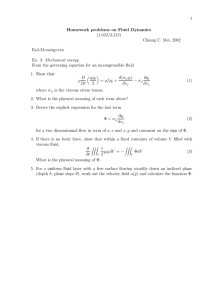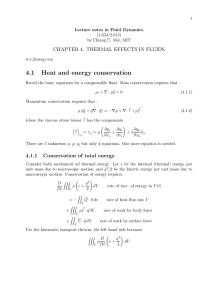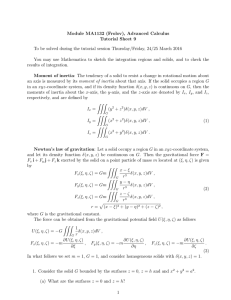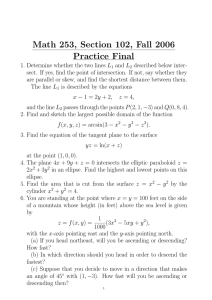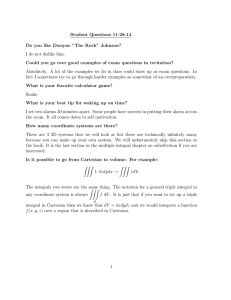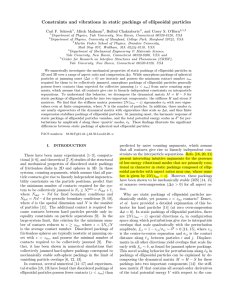1.5 Law of Momentum Conservation
advertisement
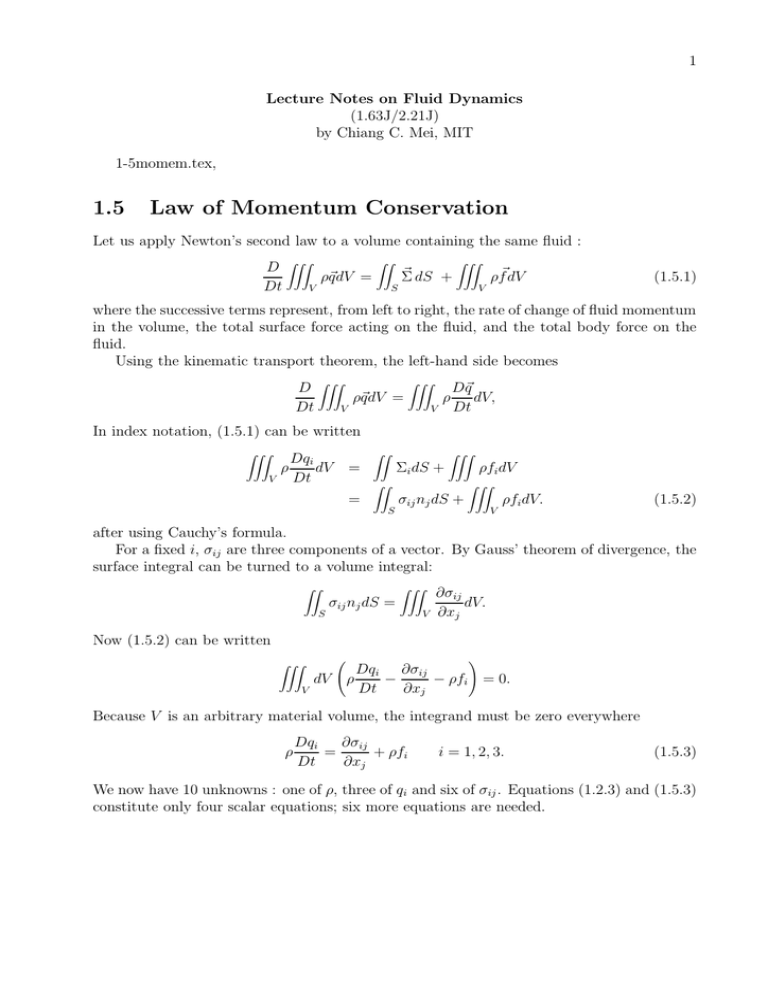
1 Lecture Notes on Fluid Dynamics (1.63J/2.21J) by Chiang C. Mei, MIT 1-5momem.tex, 1.5 Law of Momentum Conservation Let us apply Newton’s second law to a volume containing the same fluid : D Dt ZZZ ρ~qdV = V ZZ S ~ dS + Σ ZZZ ρf~dV V (1.5.1) where the successive terms represent, from left to right, the rate of change of fluid momentum in the volume, the total surface force acting on the fluid, and the total body force on the fluid. Using the kinematic transport theorem, the left-hand side becomes D Dt ZZZ ρ~qdV = V ZZZ ρ V D~q dV, Dt In index notation, (1.5.1) can be written ZZZ V Dqi ρ dV Dt = = ZZ ZZ Σi dS + S ZZZ σij nj dS + ρfi dV ZZZ V ρfi dV. (1.5.2) after using Cauchy’s formula. For a fixed i, σij are three components of a vector. By Gauss’ theorem of divergence, the surface integral can be turned to a volume integral: ZZ S σij nj dS = ZZZ V ∂σij dV. ∂xj Now (1.5.2) can be written ZZZ dV V ! Dqi ∂σij ρ − − ρfi = 0. Dt ∂xj Because V is an arbitrary material volume, the integrand must be zero everywhere ρ Dqi ∂σij = + ρfi Dt ∂xj i = 1, 2, 3. (1.5.3) We now have 10 unknowns : one of ρ, three of qi and six of σij . Equations (1.2.3) and (1.5.3) constitute only four scalar equations; six more equations are needed. 2 In the first part of this course we shall restrict to isothermal incompressible fluids only. We then have the equation of state1 ∂ρ Dρ = + q · ∇ρ = 0 Dt ∂t (1.5.4) It follows from mass conservation that ∇ · ~q = 0. (1.5.5) Four more conditions are still needed. 1 If thermal effects are important, the equation of state is relation among ρ, the fluid pressure, and the fluid temperature which would be an additional dynamical quantity. This will discussed later.
